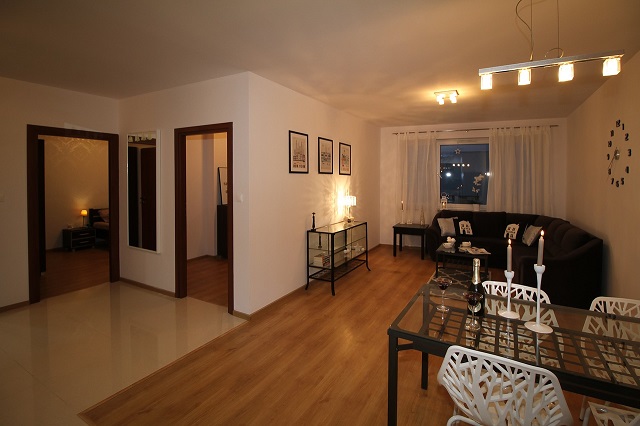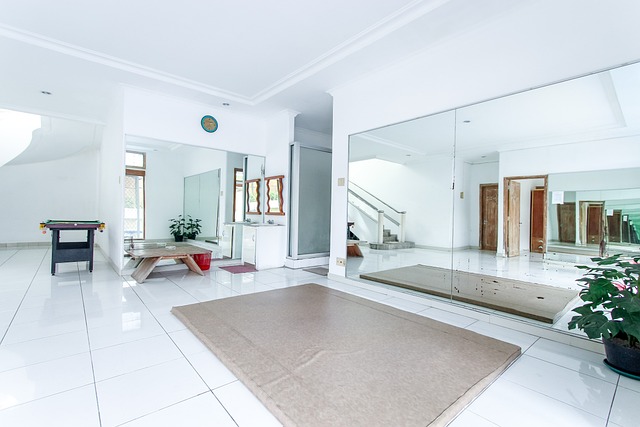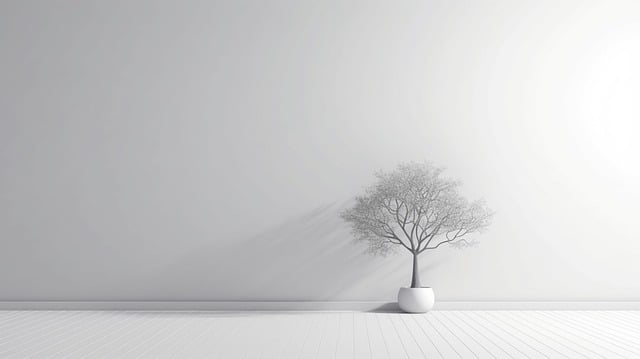Table of Contents
The Limitations of Estimating Interior Painting by Square Foot
Estimating the cost of interior painting is a crucial step in any painting project. It helps both painters and homeowners determine the budget and plan accordingly. One common method used for estimating painting costs is by square foot. While this approach may seem straightforward, it comes with several limitations that can lead to inaccurate estimates and potential problems down the line.
One of the main issues with estimating interior painting by square foot is that it fails to take into account the unique characteristics of each space. Not all rooms are created equal when it comes to painting. Some rooms may have intricate architectural features, textured walls, or high ceilings that require extra time and effort to paint. Simply multiplying the square footage by a fixed rate fails to consider these factors, resulting in an inaccurate estimate.
Another limitation of estimating by square footage is that it overlooks the condition of the existing walls. The condition of the walls can vary greatly, with some requiring more prep work, such as patching holes or sanding rough surfaces, before any paint can be applied. Ignoring these additional tasks can lead to underestimating the time and materials needed, causing delays and unexpected expenses.
Furthermore, estimating solely by square foot fails to consider the complexity of the paint job. Different surfaces may require different types of paint, such as matte or glossy finishes, which can vary in cost. Additionally, intricate designs or patterns may require more time and expertise to achieve the desired result. Without considering these factors, square foot estimates can be misleading and inaccurate.
To solve the limitations of estimating interior painting by square foot, alternative methods should be considered. One approach is to conduct a thorough assessment of each room before providing an estimate. This includes evaluating the condition of the walls, identifying any special requirements or challenges, and understanding the client’s desired outcome.
Another alternative to square foot estimates is to provide pricing based on the specific tasks involved in the project. This itemized approach allows for a more accurate estimate by considering the different elements of the painting job, such as prep work, number of coats, type of paint, and any additional services required.
Factors Affecting the Accuracy of Square Foot Estimates for Interior Painting Projects
Estimating interior painting costs is an essential aspect of any painting project. However, relying solely on square foot estimates can present several limitations and challenges. The accuracy of square foot estimates can be affected by various factors, which can lead to significant discrepancies between the estimated and actual costs.
1. Room Configuration and Layout: Square foot estimates assume that all rooms have a similar layout and configuration. However, this is rarely the case in reality. Rooms with complex layouts, irregular shapes, or multiple focal points can require additional time and effort to paint compared to standard, square-shaped rooms.
2. Wall Condition: The existing condition of the walls before painting can have a substantial impact on the time and labor required. Square foot estimates do not consider the need for extensive preparation work such as patching holes, sanding rough surfaces, or repairing damaged areas. Ignoring these factors can result in underestimating the resources required for the project.
3. Surface Texture: Different wall textures, such as smooth, textured, or stucco, can significantly influence the painting process. Square foot estimates typically do not account for the extra time and effort needed to paint textured surfaces compared to smooth walls. Failing to consider surface texture can lead to inaccurate estimations.
4. Trim and Details: Most interior spaces consist of various architectural features like baseboards, crown moldings, windows, and doors. Painting these elements requires additional time, precision, and different tools. Square foot estimates often overlook the complexity of painting trim and details, resulting in underestimated project costs.
5. Paint Color and Sheen: The choice of paint color and sheen can affect the number of coats required to achieve the desired finish. Darker or bold colors may need additional coats, while certain sheens (such as high-gloss) may require extra surface preparation. Square foot estimates do not consider these variations, leading to inaccurate estimations of paint quantity and labor.
Alternative Methods for Estimating Interior Painting Costs
When it comes to estimating the cost of an interior painting project, relying solely on square footage can be problematic. Estimating interior painting by square foot often overlooks various factors that can significantly influence the final cost. Fortunately, there are alternative methods that can provide a more accurate estimation, ensuring that you don’t end up with unexpected expenses or inaccurate quotes.
One alternative method for estimating interior painting costs is based on room size and complexity. Instead of solely relying on square footage, this approach takes into consideration the specific details of each room, such as its layout, architectural features, and the level of preparation required. By considering these factors, you can obtain a more precise estimate that accounts for the unique characteristics of each room.
Another effective method involves conducting a thorough on-site evaluation. This enables the painter to examine the current condition of the walls, assess any repairs or surface preparation needed, and evaluate the type of paint and finishes required. By physically inspecting the space and noting all the necessary details, a painter can provide a more accurate and comprehensive estimate.
Additionally, considering the number and size of windows and doors in the room can impact the amount of paint needed. These areas typically require additional preparation and may require different treatments, such as priming or multiple coats of paint. Neglecting to account for these elements when estimating by square footage can lead to inaccurate projections, potentially resulting in an underestimated quote.
Certain surface conditions can also affect the amount of paint required and, consequently, the cost estimation. For example, rooms with existing wallpaper or heavily textured walls may require additional time and effort to prepare properly. Failing to factor in these variables can lead to an inaccurate estimate and potential cost overruns.
By utilizing alternative methods for estimating interior painting costs, you can avoid the pitfalls of relying solely on square footage. These methods allow for a more comprehensive evaluation of each room’s unique characteristics and necessary preparations. They ensure that the estimate takes into account ample details, such as room complexity, repairs, special treatments, and surface conditions, enabling a painter to provide a more accurate quote.
Accurately Estimating Interior Painting Projects: Tips and Best Practices

When it comes to estimating interior painting projects, relying solely on square footage can lead to inaccurate cost estimations. Factors such as wall condition, paint type, trim work, and other variables can significantly impact the time and resources required for a successful interior painting job. To ensure accurate estimates without relying on square footage, consider the following tips and best practices:
- Evaluate the Wall Condition: Before starting any painting project, it is crucial to assess the condition of the walls. Factors such as cracks, holes, water damage, or uneven surfaces can significantly impact the time and effort needed for preparation work. By thoroughly inspecting the walls and accounting for necessary repairs, you can provide a more accurate estimate.
- Consider the Paint Type: Different paint types require varying amounts of preparation work and application techniques. For instance, applying paint to textured walls or ceilings can be more time-consuming and require specialized tools. By factoring in the paint type and surface texture, you can better estimate the time and resources needed for the project.
- Account for Trim Work: Baseboards, window frames, and doors often require additional attention and care during the painting process. These areas usually involve intricate detail work that can consume considerable time and effort. By carefully assessing the amount and complexity of trim work, you can provide a more accurate estimate for the project.
- Determine the Height of the Walls: The height of the walls can also impact the estimation process. Tall walls or ceilings may require additional equipment, such as scaffolding or ladders, and can increase the overall project duration. Taking into account the height of the walls allows for a more precise estimation of resources and labor required.
- Personalize the Estimate: Each interior painting project is unique, and estimations should reflect this individuality. Instead of relying solely on square footage, take the time to understand the client’s specific requirements, preferences, and any additional customization. A personalized estimation will instill confidence in the client and help build trust.
Conclusion
In conclusion, estimating interior painting by square foot may seem like a convenient and straightforward method, but it comes with several limitations. The accuracy of square foot estimates can be affected by various factors, such as the complexity of the project, structural features, prep work required, and the type of paint and finishes chosen. As a result, relying solely on square footage can lead to inaccurate cost estimates and potential problems during the project.
Fortunately, there are alternative methods for estimating interior painting costs that provide more accurate results. One such method is the detailed itemized estimate. Instead of relying on square footage alone, a detailed estimate takes into account all the unique factors that can affect the cost of the project. It considers aspects such as the number of coats needed, the condition of the walls, the amount of prep work required, and any additional services like priming or wallpaper removal. By considering these factors, a detailed estimate provides a more realistic and precise cost estimate.
Using alternative estimation techniques over square foot estimates offers several benefits. Firstly, it ensures that the estimate is tailored to the specific needs of the project, resulting in a more accurate cost prediction. This not only helps homeowners avoid unexpected costs but also enables them to plan their budget more effectively. Additionally, alternative methods take into account the quality of materials and finishes, which can greatly impact the final appearance of the project. By considering these factors, homeowners can make informed decisions and achieve the desired outcome while staying within their budget.
Accurately estimating interior painting projects without relying on square footage requires attention to detail and thorough evaluation of the project requirements. To achieve this, consider conducting a thorough inspection of the space to identify any potential challenges or additional work that may be needed. Take note of any structural features, damaged or uneven surfaces, or intricate details that may require extra attention. This information can then be used to create a comprehensive list of materials, labor, and additional services needed for the project.
In addition, it is crucial to communicate effectively with painting contractors. Provide them with all the necessary information about the project’s scope, desired finishes, and any specific requirements. This will allow them to provide a more accurate estimate based on the unique needs of the project, rather than simply relying on square footage. By fostering open and transparent communication, homeowners can ensure that the estimate aligns with their expectations and reduces the chances of any surprises or misunderstandings during the project.
Estimating interior painting projects without relying solely on square footage may require more effort and attention to detail, but it ultimately leads to more accurate cost predictions and satisfactory results. By considering the specific factors that affect the project’s complexity and requirements, homeowners can ensure that their painting project is completed within budget and to their satisfaction. So, rather than relying on the limitations of square foot estimates, embrace alternative estimation techniques for a more precise and successful interior painting experience.

